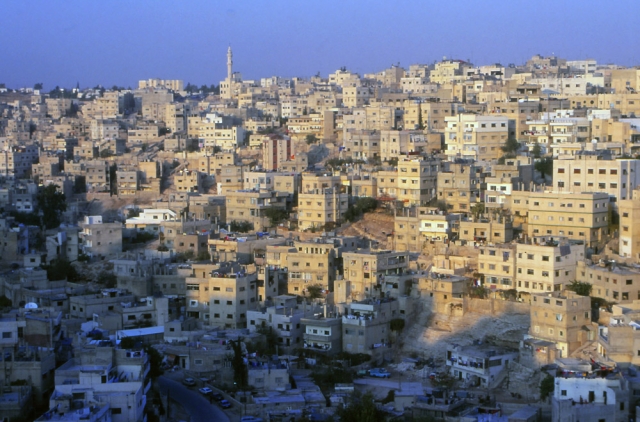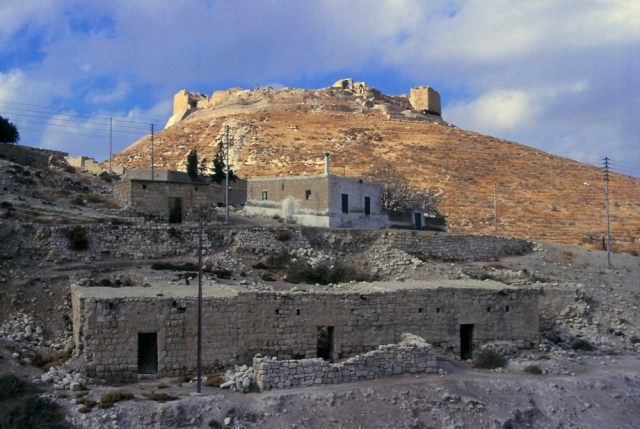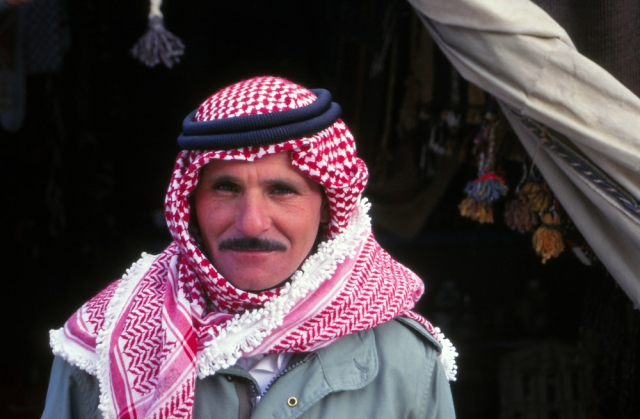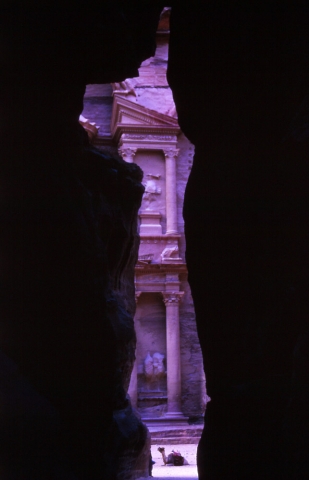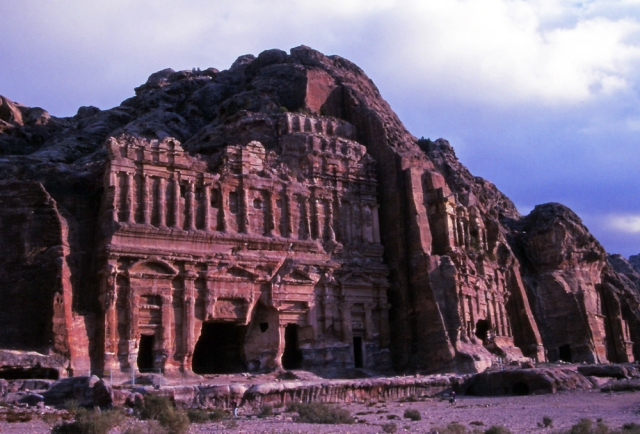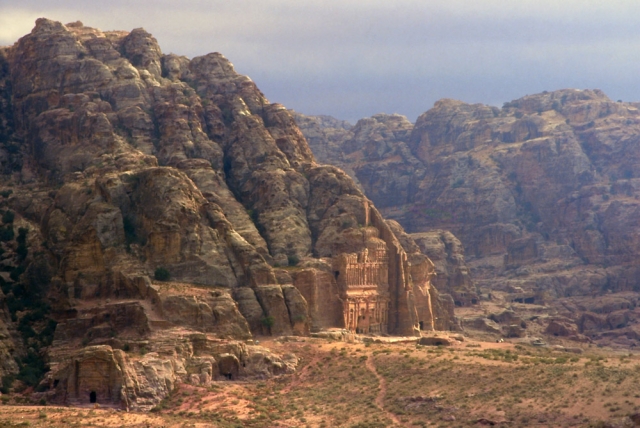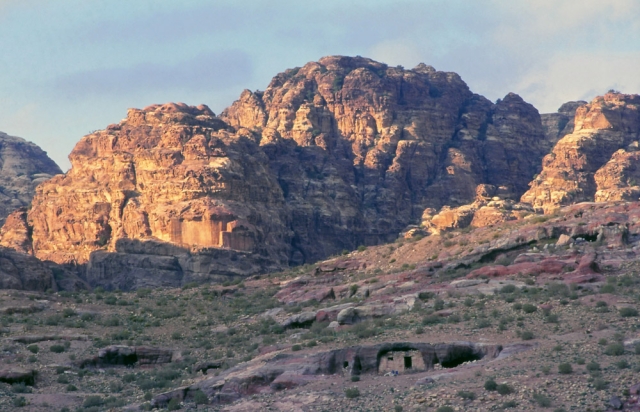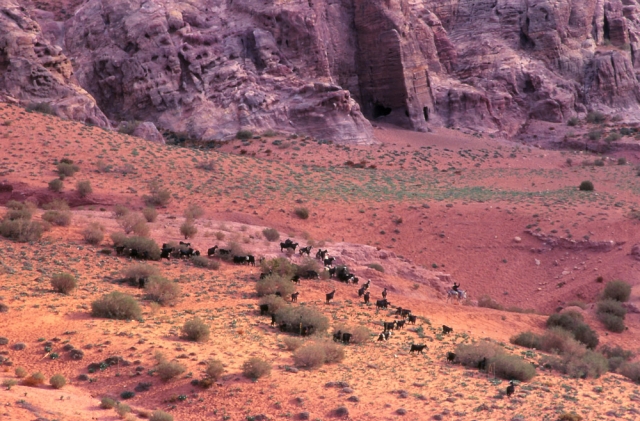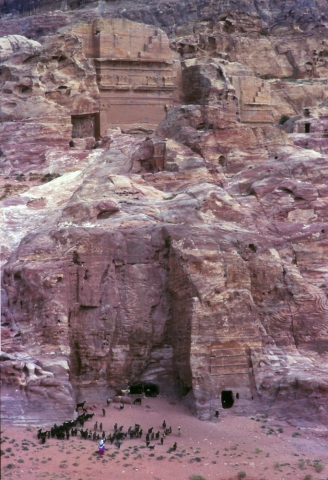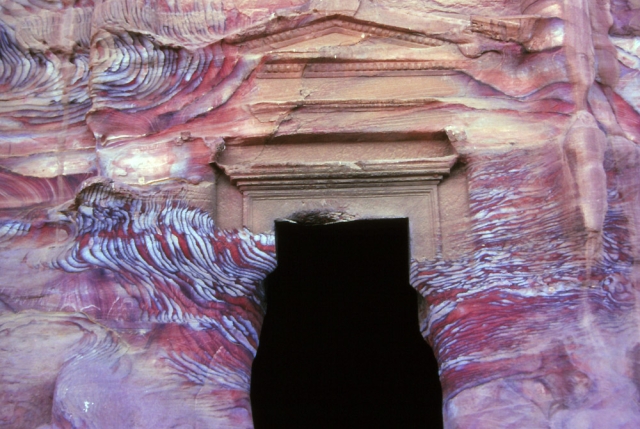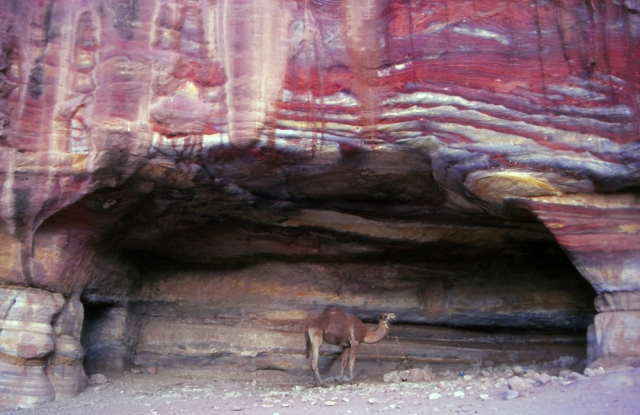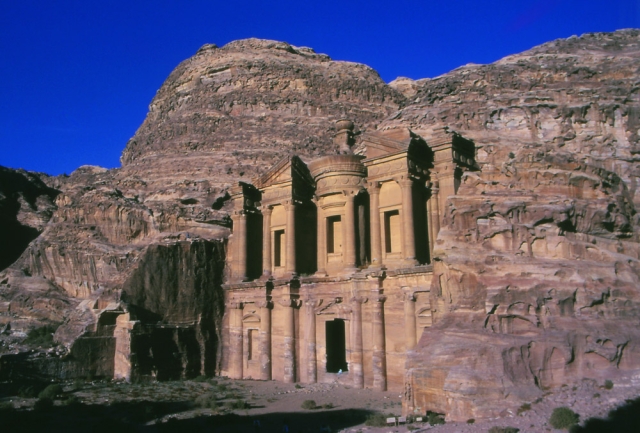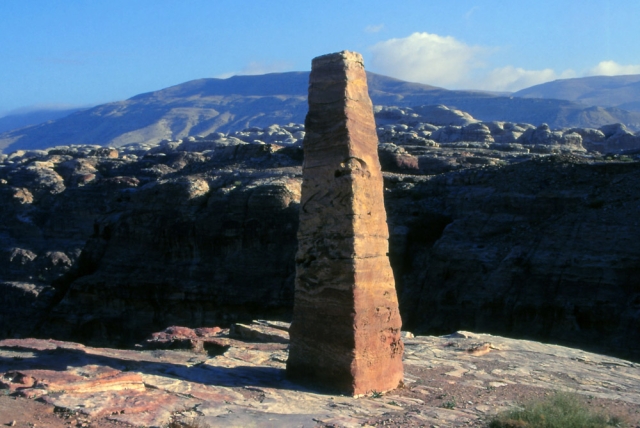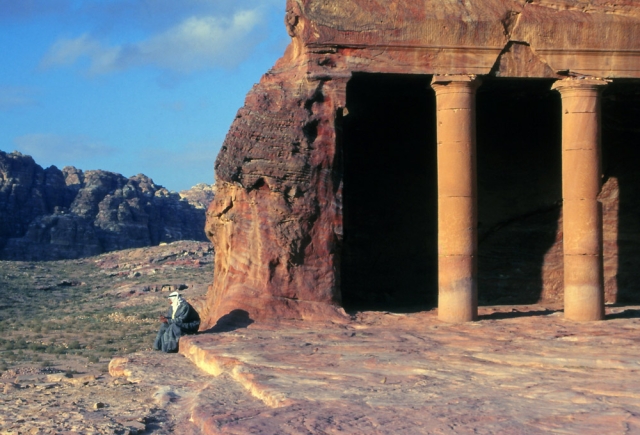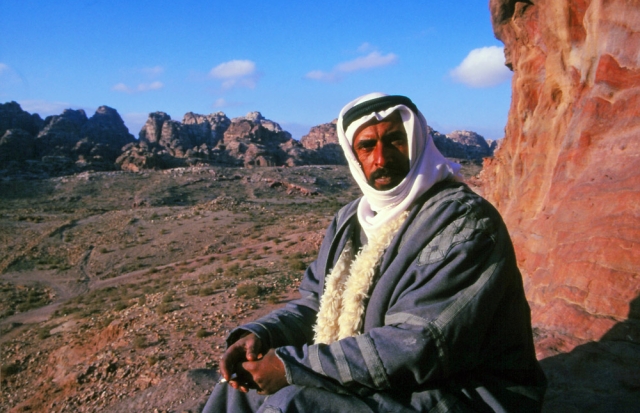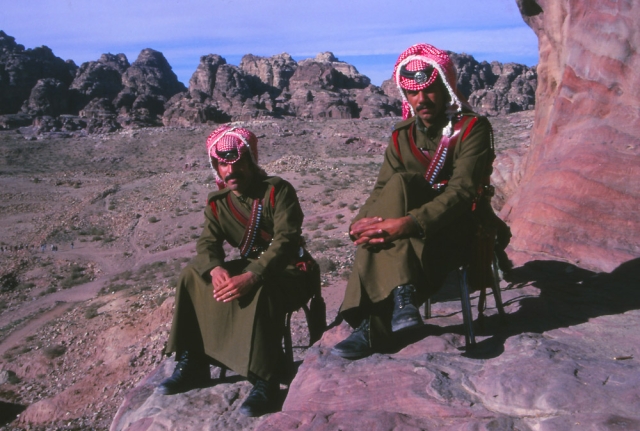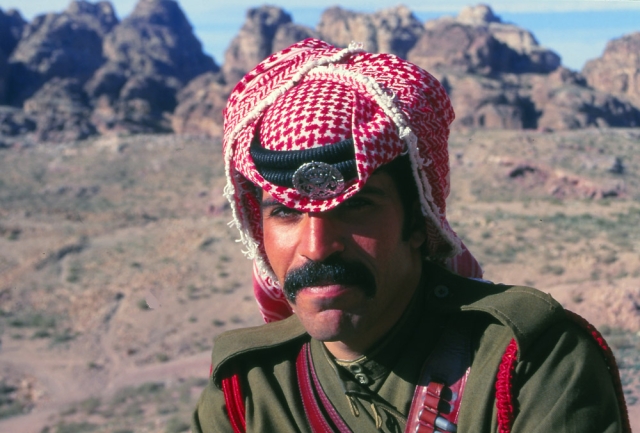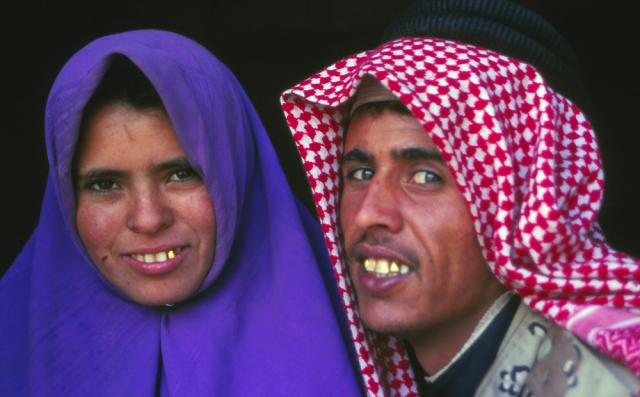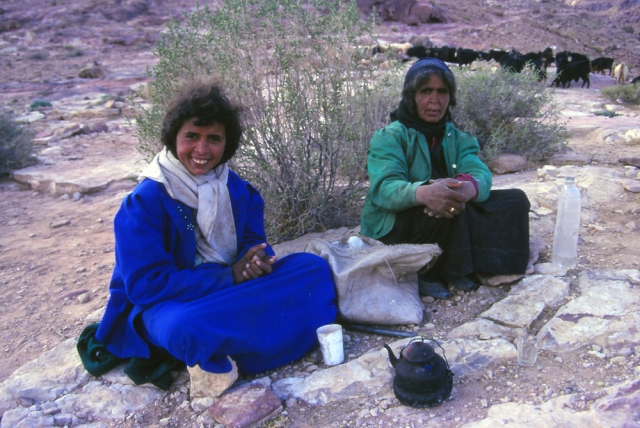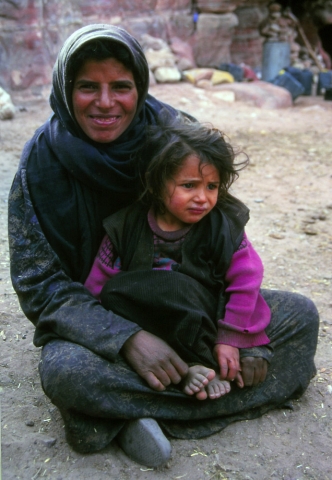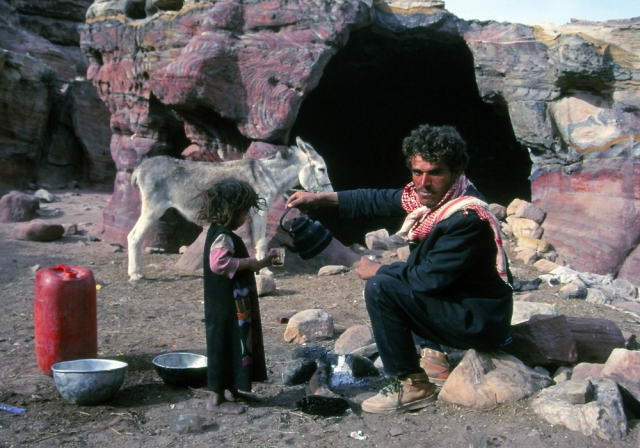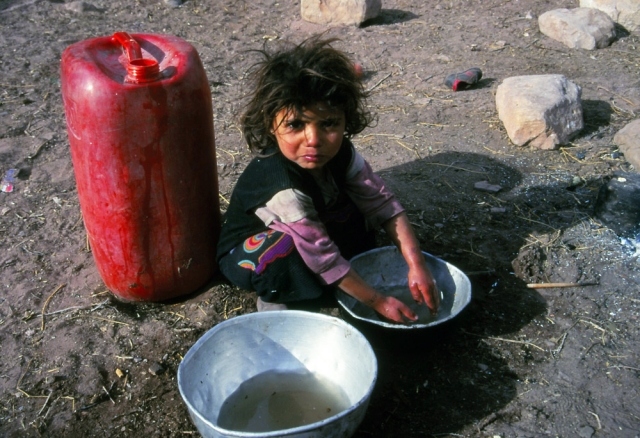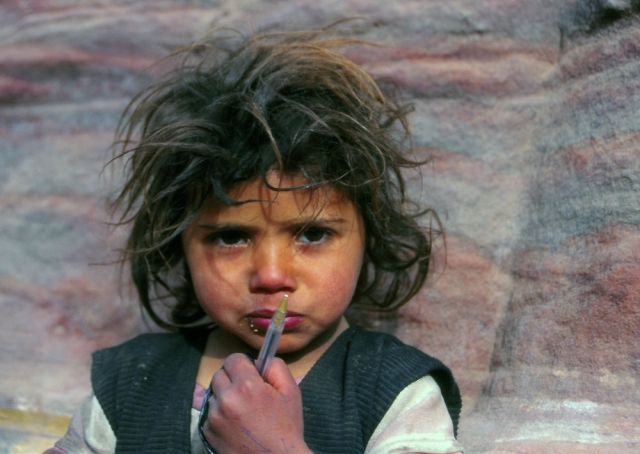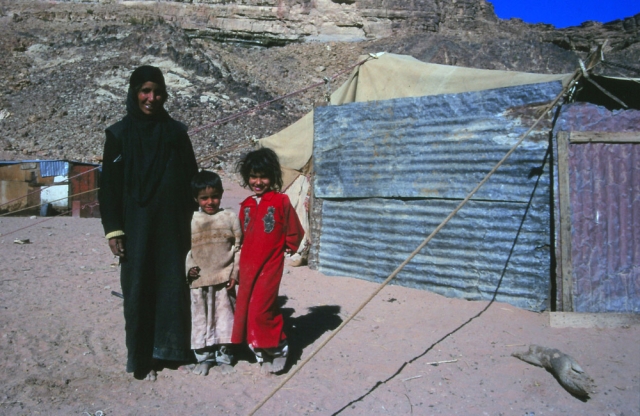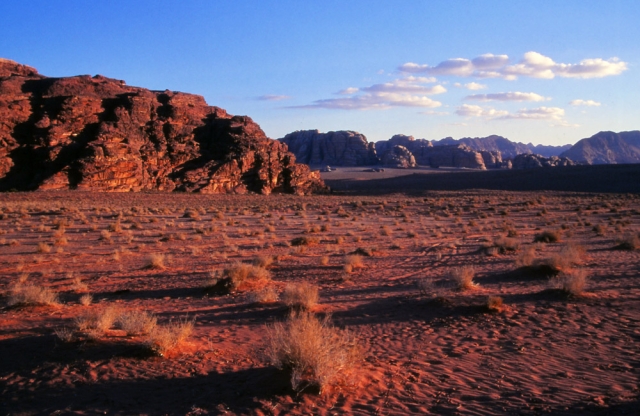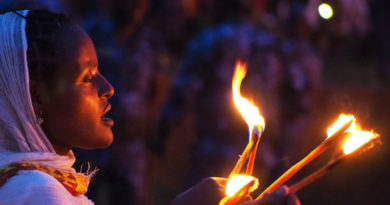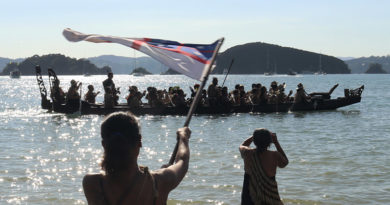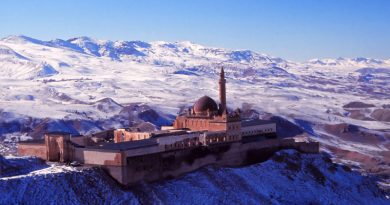Jordan in pictures
| Travel in a time of coronavirus With new travels off the menu due to the Covid-19 pandemic I’ve instead been delving into my diaries and scanning my old slides to bring you some stories and photos from the past 25 years. This time I’m taking you to the Middle East and one of my favourite places on the planet. |
If you asked me to name the most amazing place I’ve visited I wouldn’t be able to pick a winner — but I could narrow it down to a shortlist of two.
(Yes, I know you haven’t asked. But I’m going to tell you anyway.)
One would be the Temples of Angkor, where more than 1000 temples — including one built in the 12th century which is still the world’s biggest religious structure — are scattered across the Cambodian countryside in varying states of ruin and repair.
The other would be Petra in Jordan.
Petra was a desert city founded by the Nabataeans, a nomadic people skilled in stone carving and water harvesting who grew wealthy from the incense trade between Arabia and Rome.
The city reached its peak in the 1st century AD when its inhabitants created vast tombs and palaces by carving them directly into the mountainsides.
Even now arriving at Petra takes your breath away.
To reach the ruins you have to walk through a narrow canyon, the Siq, which is more than 1km long but in places just a few metres wide.
After you’ve shuffled through the stony semi-darkness of the Siq for 20 minutes, no words can express the wonder of suddenly emerging in front of a towering, sunlit mausoleum carved into a cliffside almost 2000 years ago.
The mausoleum, mistakenly dubbed the Treasury, will be familiar to anyone who’s watched the movie Indiana Jones and the Last Crusade.
What’s not so well known — at least it wasn’t to me — is just how vast Petra is.
I spent four days exploring, often walking long distances and stumbling back to my hotel well after dark.
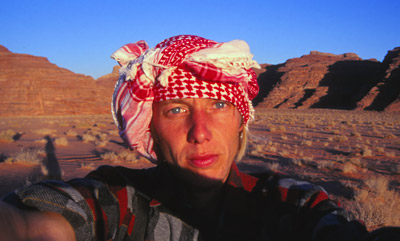
Staying overnight in the ruins is prohibited so my late wanderings didn’t always go down well with the authorities.
On one occasion I was interrogated, and propositioned, by a police officer. It was all a bit awkward. (“But the Siq is very romantic at night,” he insisted.)
Everywhere I walked I discovered tombs and temples and had fascinating encounters with Bedouin.
These proud, hardy desert dwellers no longer live in central Petra — the Jordanian government moved them out decades ago — but they still live on its outskirts. There they herd goats and survive on their knowledge of the desert, just as their ancestors did thousands of years ago.
The Bedouin are extraordinarily hospitable with none of the reticence you encounter in some Muslim peoples. Even young women would engage me in conversation and I was regularly invited into the caves and tents where they made their homes.
Another thing about Petra is the colours. I’ve been digitising my slides on a cheap flatbed scanner so the colours and sharpness are often not quite right.
Anyone looking at these images of Petra will think I’ve got these colours wrong too. It’s true that these photos aren’t spot on but the mountains, tombs and even the sand underfoot at Petra really are a dazzling mix of reds, purples and oranges.
That combination of ancient monuments, living Bedouin culture, stunning desert setting and sheer visual impact makes Petra — if you ask me — one of the most amazing places on the planet.
Story continues below the gallery. Click on the thumbnails to see full-size images.
No story about Jordan would be complete without a mention of Jordanian hospitality.
Kindness to visitors is a common thread in all Arab countries but Jordanians take it to another level.
When I was in Amman, the capital, I lost count of the number of times I’d try to settle a bill after finishing a meal, only to find someone else had already paid.
My benefactors would never tell me or expect thanks or even introduce themselves. They’d just quietly point me out to the cashier when I wasn’t looking, pay my bill and slip out.
All I’d see when I asked who’d paid for my dinner was a distant figure striding off down the road.
That hospitality isn’t limited to tourists. Jordan is relatively poor yet it hosts more refugees per capita than any other country on Earth.
At last count it was home to more than two million Palestinian refugees and 1.4 million refugees from the war in neighbouring Syria. And yet we complain about the trifling number of refugees we accept each year in New Zealand.


